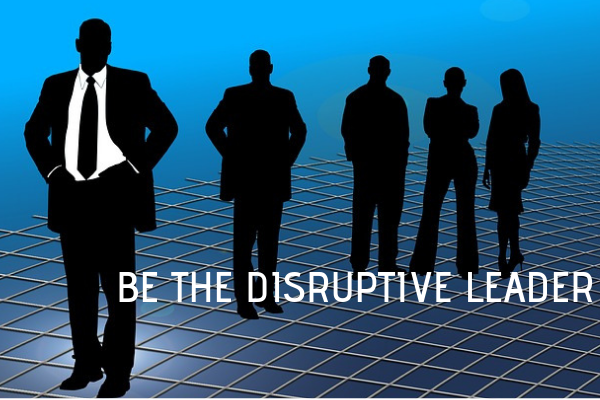Disruptive leaders are those who possess uncommon qualities and characteristics that help them become future ready. These leaders drive organisations to adapt, collaborate and excel in disruptive times.
Why do we need disruptive leaders?
To ensure that organisations succeed in a rapidly-changing business world, a new class of future-ready leaders must take charge. The new high-performing leaders incorporate and build on existing concepts of agile, digital and inclusive leadership to develop a competitive advantage. Five dimensions of high performers that allow them to move quickly, self-disrupt and most importantly, drive organisations, are as follows:
Anticipate
Leaders who anticipate are not only more prepared for the future, but they are the ones who create it. When others complain about ambiguity, they turn it into opportunities. These leaders listen rather than dictate, which helps them identify possibilities ahead of others and secure first-mover advantage. Their instinct is to create while integrating different views and taking quick judgements to help others reach unified decisions.
Drive
Those who drive organisations through disruption help others manage anxiety and stress, while bolstering motivation. They are fuelled by purpose and inspire others with the help of compelling messages. These leaders are empathetic and can relate to the thoughts, emotions and experience of others and guide them through rocky roads.
Being aware that colleagues often reach a point of exhaustion, these leaders play a role in energising them by using their intrinsic motivation.
Accelerate
Being future ready is all about being the first to execute an innovative idea. Disruptive leaders act rapidly and courageously to secure an advantage over their competitors. They must possess the perspective and business acumen to recognise true innovation, when it is ready to launch, and even when it is unwelcome. These leaders avoid waterfall approaches. Instead, they act with agility to move ideas forward quickly. The ability to accelerate is the most traditional leadership skill.
Partner
Leaders with the ability to partner effectively understand that innovation is created collectively, not alone. Technology has dissolved boundaries between industries, a new network and partnership is seen forming that combines different strengths and capabilities.
By avoiding restrictive hierarchy and the command and control leadership models of the past, these leaders facilitate empowered and original thinking. Its best practitioners also grasp that collaboration always creates harmony, and believe that productive confrontation can spark original ideas.
Trust
Leaders who inspire trust recognise that diversity is crucial. Also, it requires more than welcoming differences in race, gender, orientation and social background. It encompasses a mindset in inclusivity, sharing goals, sharing responsibility and power. It involves leveraging new ideas about the meaning of work and its place in our lives, embracing the gig economy by partnering permanent staff with contractors on short- and long-term projects.
Disruption by definition allows for differences and individuality and defiance of norms. These leaders know that rising generations care about fulfilling their personal dreams and that by helping individuals to achieve these, organisations can maximise their disruptive capability.
Korn Ferry conducted an extensive review of futuristic literature— studies from which researchers derived a set of potential skills to meet the challenges of tomorrow. The content in this article is an extract from the study, The Self Disruptive Leader.
Value our content... contribute towards our growth. Even a small contribution a month would be of great help for us.
Since eight years, we have been serving the industry through daily news and stories. Our content is free for all and we plan to keep it that way.
Support HRKatha. Pay Here (All it takes is a minute)





































Leadership, employee engagement, gig economy, workplace culture – how does all this fit in the current work scenario? Here’s your guide to all things HR, in our library of interviews with over 100 thought leaders and HR influencers. Collect fresh perspectives from the best with LeadersHum!
Disruptive Leadership. This term reminds me of the story of the Invisible Dress, marketed by a fraudster.
Anticipation, Drive, Acceleration, Partnership, and Trust – All these are fine. But how and why should we link these good concepts with disruption?
The verb ‘disrupt’ only means “to cause something to be unable to continue in the normal way.”
A few examples of usage are: “Protesters disrupted the conference.” “The weather disrupted our travel plans.” “She has a disruptive influence on the other students.”
There may be occasions when the leaders may have to work overtime to push through some positive and essential changes. The task of overcoming the resistance may be challenging. By no stretch of the imagination, disruption can be the answer. The ‘disruptive style’ can never be an upbeat leadership style.
Disruptive leadership can be handy only to push some personal agenda at the cost of the organization or to settle some scores against the colleagues by any vindictive leader,
I think this style of leadership very effectively used in armed forces to dispel lethergy and complacency. Disruptive leadership needed to bring about quick positive change to achieve desired results.
Disruptive leaders bring about out of box idea to provide solutions and success.
Thank you Mr Ghosh for taking up this topic.. regards ?